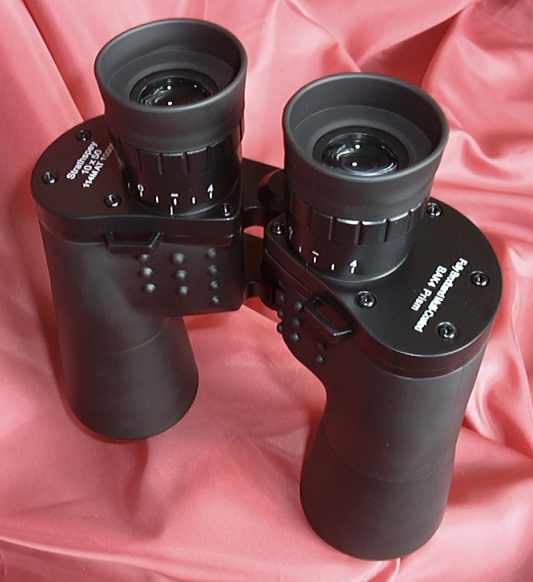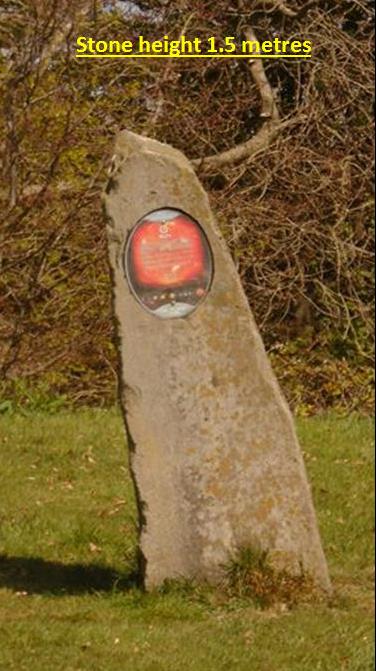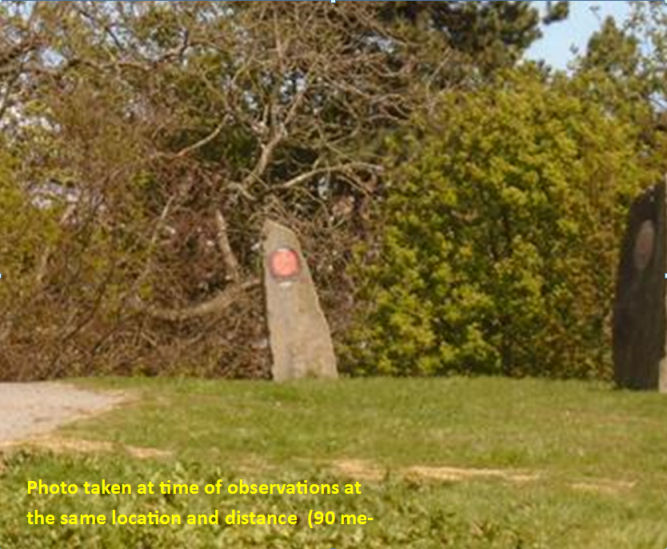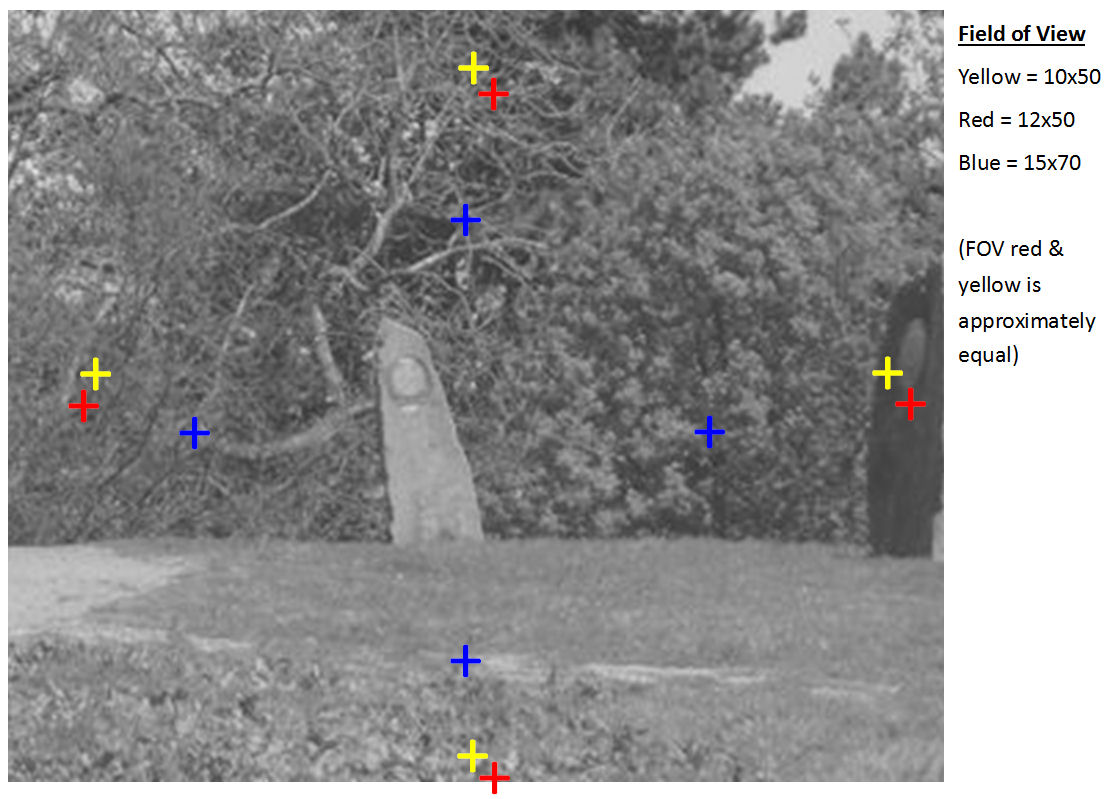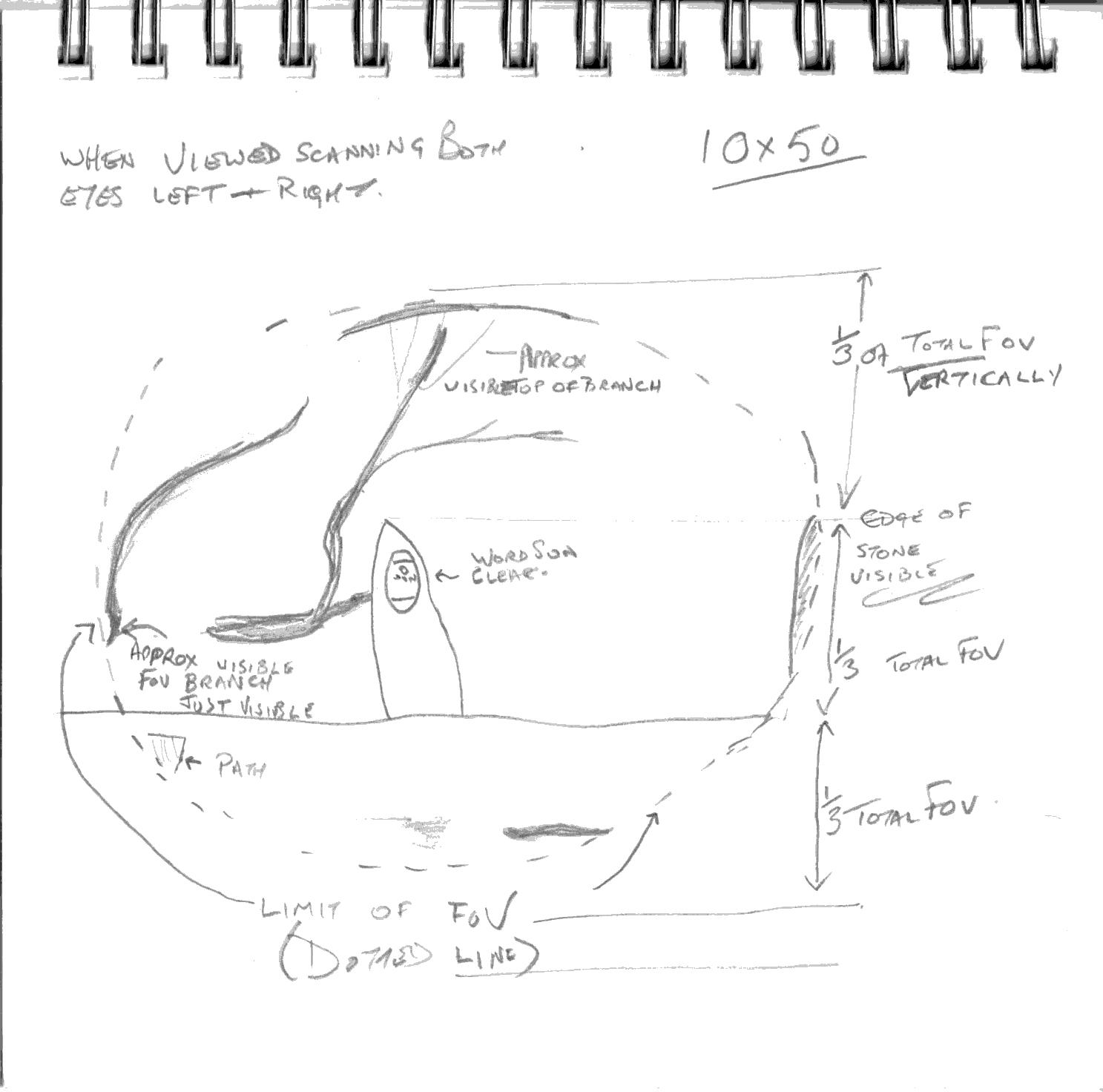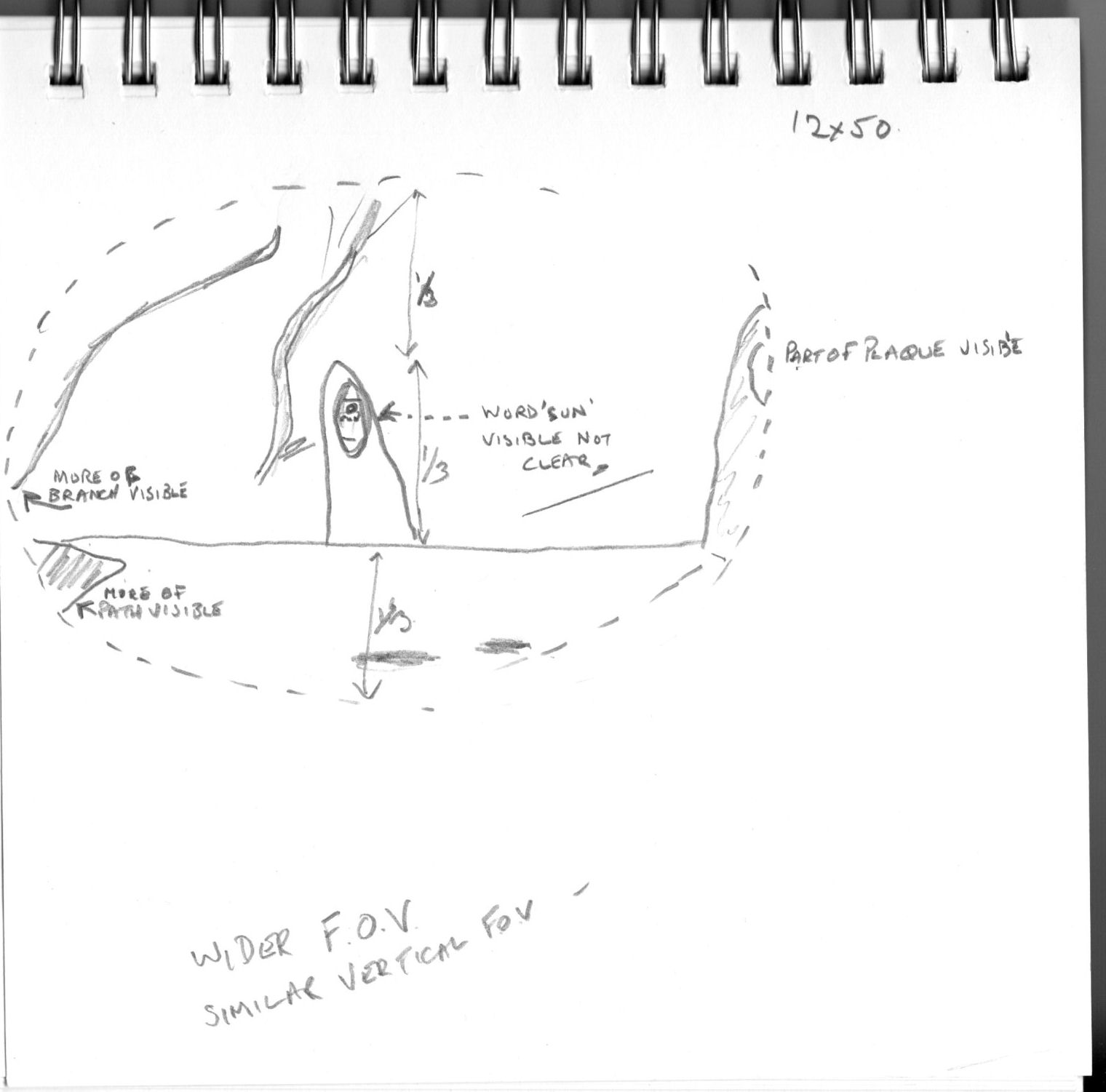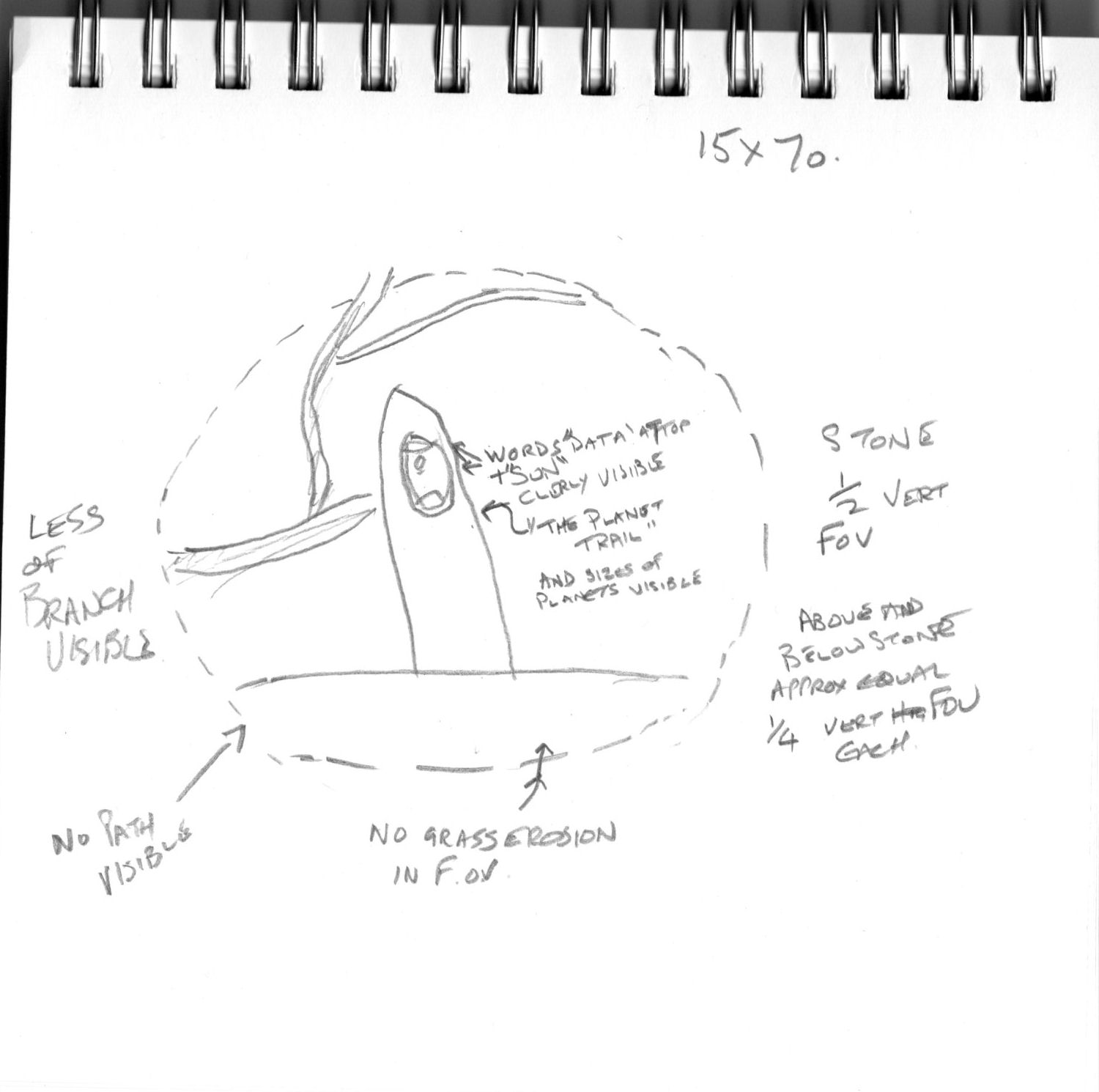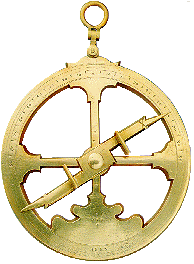Comparison of three sizes of binocular
Since writing this article I have tested all three pairs of binoculars and you will find Word and PDF documents below left
Specifications of binoculars
1 Nikon Aculon a211 10x50
2 Strathspey 12x50
3 Revelation Astro 15x70
All specifications are quoted from manufacturers websites.
Nikon Aculon a211 10x50 specs
Ashperical multicoated lenses and BaK4 high index Porro style prisms
Turn-and-slide rubber eyecups
Ergonomic lightweight design (31.7 oz )
Durable and protective rubber-armored coating
Lead and arsenic-free Eco-Glass
50mm objectives
Focusing System Central Focus
Magnification 10 x
Objective Diameter 50 mm
Angular Field of View (Real) 6.5 °
Angular Field of View (Apparent) 59.2 °
FOV at 1000 yds 341 ft / Field of view at 1,000 m – 114 m
Close Focus Distance 23 ft
Exit Pupil 5 mm
Relative Brightness 25
Eye Relief 11.8 mm
Size (Length x Width) 7 x 7.8 inches
Revelation Astro 15x70 specs
Magnification: 15x
Optical diameter: 70mm (fully mulitcoated objective)
Field of view - angular 4.4°
Field of view - linear 231.0m/1000m
Apparent field of view: 66.0°
Eye relief: 18.0mm
Exit pupil: 4.7mm
Closest focus: 9m
Coatings: Fully multi-coated
Prisms: Fully mulitcoated BAK-7 Porro
Interpupillary distance range: 56mm - 72mm
Center focus
Rubber coated
Tripod adaptable with L clamp (available separately)
Right hand diopter adjustment
Weight: 1.4kg
Height: 27.4cm
Additional included accessories: Neckstrap, Objective and eyepiece caps, Carrying case
Strathspey 12x50 specs
Magnification12x
Objective lenses50mm
PrismsBAK-4
Coatingslevel I
Body Length 18cm
Finishrubber armour
Field of view 5.26 degrees
Exit pupil diameter 4.15mm
Weight0.6kg
Tripod mountable
General quality
The Nikon 10x50 lens caps are very loose fitting and do not remain on the binoculars, even when in the case. In fact I found it very dificult to keep them on when putting the binoculars in the carry bag. The objective lens covers were flat with a raised ring which fitted inside the opening (see pictures), whilst the eyepiece was protected by a pliant rubber one piece fitting All three pieces can be hung on the strap so they aren't easily lost, but this does not help in protecting the lenses which is their main purpose.
Eye relief is proided by twisting and sliding up and the diopter adjustment is slightly stiff but with the diopter adjustment raised a better grip makes it easier.
The carry case/bag is very well made of a hard wearing cloth material with a thick sponge padded interior which is rather spoilt by the fact that there is no carrying strap although the binoculars have a comfortably wide strap. There is a loop on the back of the carrying case through which a strap can be atached.
The Strathspey 12x50 had much better eyepiece protection which was well fitted and remained on the binoculars even when being carried out of the bag. The fitting was tight enough that removing them took deliberate effort; I believe that it would be difficult to lose these eyecaps, unless like me you leave them lying around and forget them! The strap was thinner than the Nikon's and were uncomfortale when carrying the binoculars round the neck,
The carrying bag was made with material similar to the Nikons. although the inner sponge was much thinner and did not offer as much protection and did not hold its shape as well. The bag did have a nice wide and comfortable carrying strap.
Eye relief is provided by folding down/up the rubber piece. (Whatever it is called?).
The Revelation caps for the eyepiece end was a one piece rubber fitting and not very secure, although better than the Nikon's. The objective lens caps were soft rubber and tended to drop off whilst in the bag. The carrying strap was thin and uncomfortable when wearing round the neck although the case strap was wide and more comfortable. The case itself is similar to the Strathspey.
Eye relief is by folding up the rubber bits.
Flexible ill fitting eye cups on the Revelation Astro 15x70
Location & preparation for the field test
After April’s observation challenge which is reported elswhere, I decided to do a field test of each pair of binoculars in my possession and took them to the planet trail on Balgay Hill to test them using the Solar stone as the test object and the ground was fairly level. I walked approximately to a distance of 90 metres but the ground at that point dropped quite a bit and any further would have resulted in much of the stone being lost to view.
My main intention at the time was to do a simple test to determine the field of view (FOV) but this got more complicated as the day wore on.
Binoculars were atached in turn with a standard L bracket adaptor to an ordinary stable photo tripod, with the head locked into position.
After testing each pair of binoculars I made a quick sketch with notesfor comaprison before the next test.
To test FOV I looked straight ahead through the eyepiece using both eyes and then, without moving my head, scanned left and right to determine the maximum view I could see.
The Solar Stone
My sketches with notes made at the time
Results
Both the Nikon 10x50 and the Strathspey 12x50 had roughly the same FOV although the Strathspey was slightly wider and, as expected the 15x70 Revelation Astro had a much narrower FOV compared to the other two. I was unable to determine if the FOV was as per specifications but have no reason to think otherwise.
More importantly I noticed that the test object in the 10x50’s was brighter and much clearer than the 12x50’s and I was able to read the words “SUN and just make out the words “THE PLANET TRAIL” on the lower section of the plaque. with the 12x50 I was able to read “SUN and just make out “PLANET TRAIL” but the word “THE” was not quite clear, but still readable…just. This could be a reflection of my vision problems. In both I could make out the planets in the bottom section of the plaque, again only just.
With the Revelation 15x50 I could read clearly (from the top to the botton of the plaque) ”DATA" -the circle above and the word "SUN"-The planets with the yellow and red of the sun, the blue/white of Earth, the red/yellow of Jupiter and the ring of Saturn-and “THE PLANET TRAIL”. I was also able to make out the Dundee logo and see that there were words above it, though not readable.
I am not sure if it was the Bak7 prisms of the 15x70 binos, which I believe are inferior to the Bak4’s , or the fact that there was less ambient light, but the 15x70’s seemed to be dimmer than the others but perhaps this is how it works, it did not seem to affect much otherwise.
Field of view (FOV)
The difference in the height (elevation) between the Nikon and Strathspey binoculars is as a result of movement in the tripod head when changing binoculars.
Recommendations. (my opinion)
Both the Strathspey 12x50 and the Nikon 10x50 would be best for wide angled astronomy such as larger deep sky objects, large star clusters and full lunar observations etc. and would be easier to use when looking for planets. The Revelation 15x50 were probably better than the other two for smaller deep sky objects, smaller star clusters and closer and more detailed study of the moon and planets.
My next step is to test these three pairs at night to see if my recommendations are confirmed and report when ready… Watch this space!
My personal preference is for the 10x50’s, but is only because I can adjust the right diopter to suit my eye.
Strathspey 12x50
The Solar Stone
The plaque
Binocular Field Test
